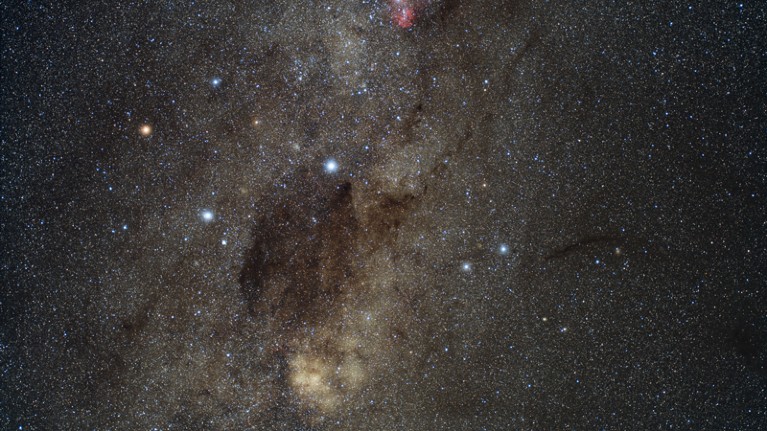- RESEARCH HIGHLIGHT
Dark space cloud caught donning halo of hydrogen molecules

A dark Galactic cloud similar to the Coalsack nebula (central black blob above) has been seen for the first time in the act of generating molecular hydrogen. Credit: ESO/Digitized Sky Survey 2/Davide De Martin
Access options
Access Nature and 54 other Nature Portfolio journals
Get Nature+, our best-value online-access subscription
$29.99 / 30 days
cancel any time
Subscribe to this journal
Receive 51 print issues and online access
$199.00 per year
only $3.90 per issue
Rent or buy this article
Prices vary by article type
from$1.95
to$39.95
Prices may be subject to local taxes which are calculated during checkout
Nature 563, 158 (2018)
doi: https://doi.org/10.1038/d41586-018-07280-6


